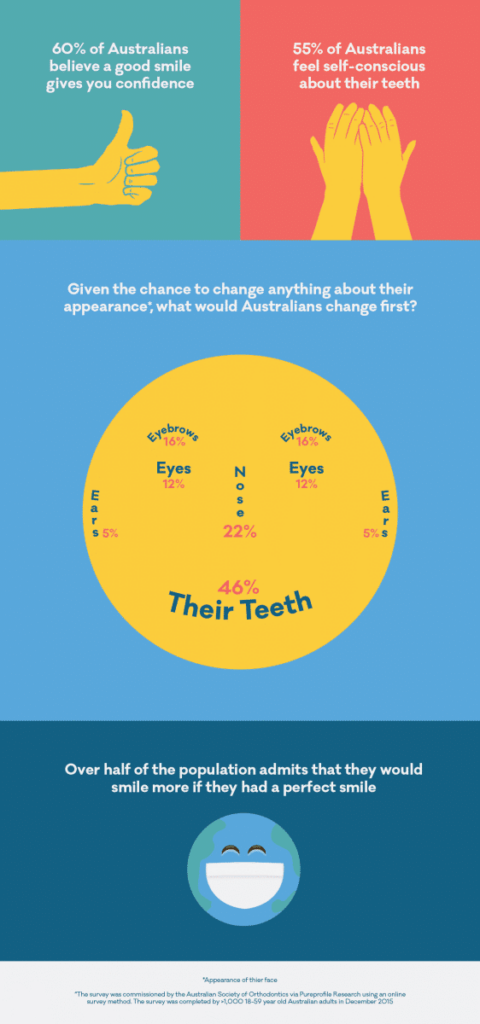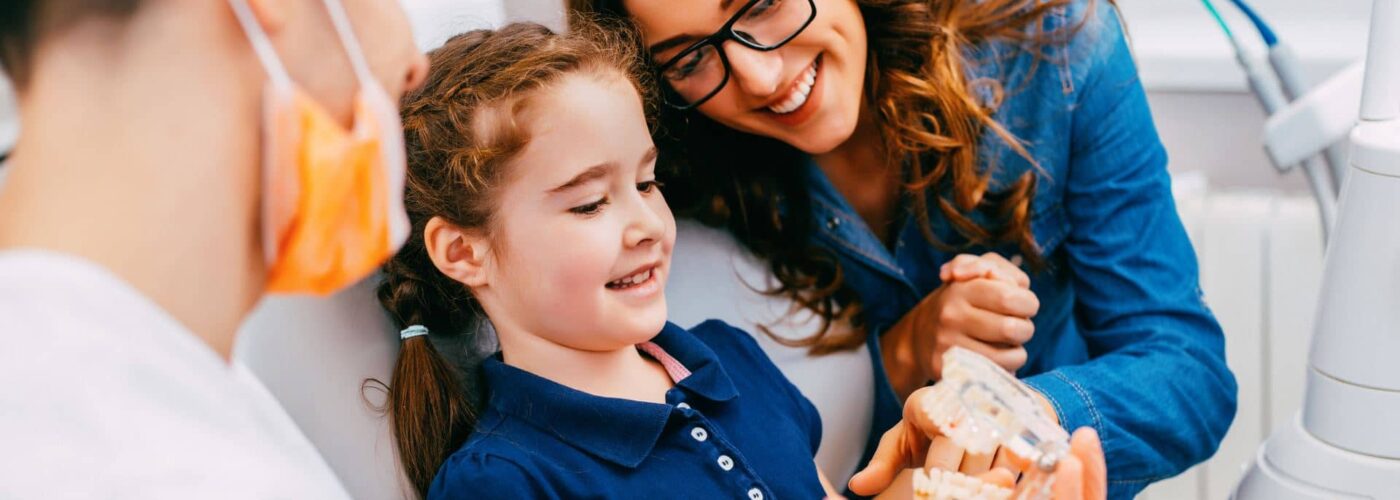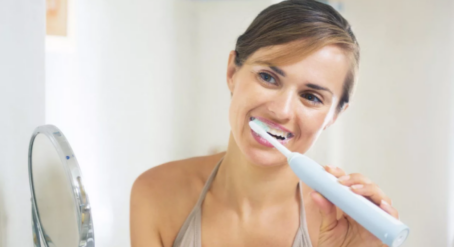Australian attitudes:
An increasing number of adults seeking adult orthodontic treatment tells us that as a nation, we’re not happy with our teeth. We set out to find out exactly how Australian’s feel about their teeth and smiles and here’s what we found:
- Over half of Australian’s (55%) feel self-conscious about their teeth
- Furthermore, almost two thirds (62%) would like to actually do something to fix their crooked smiles
- Unsurprisingly, the results revealed that given the chance, almost half (46%) of Australians would like to ‘change’ their teeth over the chance of changing any other facial feature

So why are so many of us unhappy with our teeth/smiles?
If you’re one of the 62% of Australian adults considering orthodontic treatment, you’re not alone. Over the last five to ten years, orthodontists from all over Australia are increasingly treating more and more adults for adult braces and other orthodontic treatment.
These days, it’s not uncommon for parents to undergo treatment alongside their child; often orthodontic treatment just wasn’t an option when patients were teens, be it due to the cost or lack of accessibility. Additionally, parents see firsthand the great results that can be achieved with treatment and decide to undergo treatment themselves.
What to consider
Given that orthodontic treatment is one of the least invasive kinds of cosmetic treatments available, fixing crooked teeth is one of the simplest ways you can increase your confidence – after all 60% of Australians believe that a good smile can give you confidence. And whether it’s for confidence in the boardroom or a picture-perfect smile, orthodontists can certainly help.
Orthodontic treatment has come a long way since the days of metal braces; today, contemporary orthodontic treatments are designed to be as unobtrusive and practical as possible so patients can get on with their lives. While metal braces are still an extremely effective way of straightening teeth and achieving a perfect smile, orthodontic treatment options for adults now include Ceramic (clear) Braces, Lingual (inside) Braces and Clear Aligners (for example Invisalign®, Spark® and 3M Clarity).
If you are considering treatment, there are three key things to consider:
- No referral needed – you don’t need a referral to see an orthodontist – book yourself a consultation to receive an expert opinion. It’s also important to note that for optimum care and treatment outcomes, as well as ongoing dental health, you should be seeing your dentist regularly throughout your orthodontic treatment.
- Are you seeing a specialist? – ensure that you are seeing a specialist orthodontist by ensuring they’re a member of the ASO or checking our ‘Find An Orthodontist’ tool to locate your most local orthodontists
- Treatment options – Whether you’re considering traditional braces or an alternative to braces, only an orthodontist has the training, experience and expert knowledge to be able to offer you the full suite of treatment options and give you the confidence you’re in the best hands.










